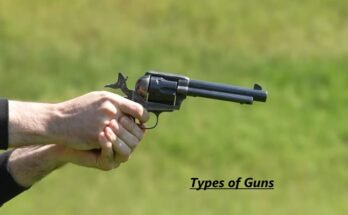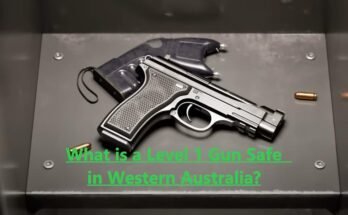Yes, guns can overheat with prolonged use. Excessive firing can cause the barrel to become extremely hot.
Firearms, like any mechanical tool, generate heat due to the rapid energy release when a bullet is fired. The friction and pressure from the bullet traveling down the barrel, combined with the explosive force of the gunpowder igniting, contribute to the gun’s increasing temperature.
Overheating can result in a reduction in accuracy, potential barrel damage, or even the danger of cook-off, where ammunition fires without pulling the trigger. Regular cleaning, proper maintenance, and allowing cooling periods during shooting sessions can help prevent guns from becoming too hot. Gun owners and users should be aware of these risks and manage their firing rate accordingly to maintain safety and weapon integrity.
Heat Generation In Firearms
Heat Generation in Firearms is a fascinating aspect of gun mechanics that often goes unnoticed. When a gun fires, it isn’t just the bullet that generates energy. Various components within the gun also create heat through different processes. Understanding these can help users manage their firearms better and ensure safety.
Sources Of Heat During Gun Usage
Firing a gun leads to multiple internal actions that generate heat. Key sources include:
- Fricative forces: Metal parts rubbing together create frictional heat.
- Combustion: The burning of gunpowder releases intense heat.
- Gas pressures: Expanding gases from the fired round contribute to the warmth.
- Barrel contact: The bullet moving through the barrel adds to the heat through friction.
Each part of a gun plays a role in its overall thermal state. Proper lubrication and maintenance can help manage this heat.
Rate Of Heat Buildup
The rate at which a gun gets hot depends on several factors:
| Factor | Effect on Heat Buildup |
|---|---|
| Rate of Fire | Faster shooting increases temperature. |
| Ambient Temperature | Hot weather can accelerate heating. |
| Gun Material | Metals dissipate heat at different rates. |
| Cooling Mechanisms | Features like vents can reduce buildup. |
Recognizing how fast a gun heats up is crucial for managing its temperature. Take breaks between shots to allow the gun to cool down. This can prevent wear and ensure safety.
Thermal Limits Of Guns
Understanding the thermal limits of guns is essential for safety and performance. Guns operate within a range of temperatures. Exceeding these limits can cause damage. Now let’s explore the material and mechanical boundaries firearms face when they heat up. We’ll delve into Material Constraints and Melting Points, and the Mechanical Stress from Heat.
Material Constraints And Melting Points
The materials used to make guns are chosen for their ability to withstand heat. However, they have limits. Each material has a melting point, the temperature at which it changes from solid to liquid.
- Steel alloys, often used in gun barrels, have melting points around 1370°C to 1510°C.
- Aluminum, used for some gun parts, melts at about 660°C.
- Synthetic stocks and grips can deform at much lower temperatures.
Mechanical Stress From Heat
Heat affects gun parts by causing expansion. When parts heat up and expand, they can warp or crack. This is called mechanical stress from heat.
| Gun Part | Effect of Heat |
|---|---|
| Barrel | Can warp, affecting accuracy |
| Action | May become tight, impeding function |
| Stock | Could crack or deform |
Frequent firing, especially in automatic weapons, raises temperature quickly. This can lead to thermal expansion in barrels, actions, and other critical parts.
Real-world Scenarios Of Gun Overheating
Have you ever touched a spoon left in a hot pot? Ouch! Guns get hot too, just like that spoon. Guns have parts that rub together fast when we use them. This makes them very hot, sometimes too hot. Let’s peek into real times when guns got too hot and what it means for those handling them.
Military And Law Enforcement Reports
In the military, guns work hard. They often fire many bullets fast, which can make them super hot. This heat can cause problems. Soldiers share stories of guns feeling like fire sticks after long fights. This is not just about the gun’s touch. It can also hurt how well it shoots.
- Rifles may jam, not letting bullets out.
- Machine guns might stop shooting if used too much.
- Pistols are smaller but can still get too hot in heavy use.
Law officers train to handle their guns when they’re hot. They know hot guns need a break to cool down. Without breaks, the guns might not work right when most needed.
Civilians And Sport Shooting Incidents
Think of sport shooting like a race. Guns here speed up and get hot too. But people shooting for fun or practice can also face overheating guns.
- At a range: Guns can overheat from many bullets shot fast.
- During competitions: Quick shooting heats guns much.
- Hunting trips: Times of rapid firing might lead to a hot gun.
Shooters often hold on tight even when heat builds. But they should let guns cool. Cool guns are safer and work better.

Credit: www.amazon.com
Cooling Mechanisms In Firearm Design
In the world of firearms, heat is both an unavoidable byproduct and a challenge to manage. When a gun fires, friction and the explosive release of gases generate high temperatures, which can affect performance and longevity. Manufacturers integrate innovative cooling mechanisms into firearm design to combat this heat. Understanding these systems is key to appreciating modern gun technology.
Passive Cooling Features
Passive cooling in firearms relies on the materials and design aspects that naturally dissipate heat without moving parts or additional energy. Let’s explore these features:
- Heat-resistant materials: High-tech polymers and advanced metal alloys resist heat better than traditional materials.
- Fin designs: Some barrels come with fin-like structures that increase surface area, promoting heat loss to the surrounding air.
- Barrel thickness: Thicker barrels can absorb more heat, but they must strike a balance to avoid adding excessive weight.
Active Cooling Systems
Active cooling systems are more sophisticated, often incorporating methods that forcibly remove heat. They add functionality beyond the inherent design of the firearm to ensure a cooler operation.
| System Type | Description | Usage Example |
|---|---|---|
| Liquid Cooling | Circulates a coolant around hot components to transfer heat away. | Used in some heavy machine guns. |
| Forced Air | Uses fans or pumps to push cool air through heat-prone areas. | Found in advanced military weapons systems. |
| Heat Sinks | Attach to the barrel to absorb and redistribute heat. | Common in competition shooting rifles. |
Both passive and active cooling systems aim to keep guns operating safely and efficiently in the heat of action. By implementing these mechanisms, firearms can maintain performance and reduce wear over time.
Safety Concerns And Handling A Hot Firearm
When enjoying shooting sports, understanding if a gun can get hot is crucial. Intense firing can cause a firearm to become very warm, or even hot to the touch. Proper care is essential to prevent accidents and injuries. This involves knowing how to manage a hot firearm and what to do if a burn occurs.
First Aid For Burns
Quick action is important if you get burnt.
- Immediately cool the burn with cool water, not cold.
- Remove any clothing around the burn carefully.
- Don’t apply ice, it can damage the skin.
- Cover with a sterile bandage or clean cloth.
- Seek medical attention if needed, especially for large burns.
Preventive Measures For Shooters
To handle firearms safely, certain practices are paramount.
- Limited Firing: Avoid extensive rapid firing to minimize heat accumulation.
- Heat-Resistant Gloves: Use these to protect your hands during prolonged shooting sessions.
- Firearm Maintenance: Regular cleaning helps prevent excessive heating.
- Cooldown Time: Allow your gun to rest and cool between shooting rounds.
- Firearm Inspection: Check for any signs of wear that can cause overheating.
Prioritizing safety ensures an enjoyable shooting experience for everyone involved.
Manufacturers’ Testing And Thresholds
Understanding how guns withstand heat is critical for safety and performance. Manufacturers’ Testing and Thresholds inform users about a firearm’s capabilities. Tests simulate extreme conditions to ensure reliability. Manufacturers set specific heat resistance thresholds. These ensure a gun operates safely, even after multiple rounds.
Industry Standards For Heat Resistance
Gun manufacturers adhere to strict industry standards for heat resistance. These standards guarantee that firearms perform under high temperatures. The process includes:
- Durability testing
- Material analysis
- Thermal regulation checks
Manufacturers often share these thresholds. This helps users understand a firearm’s heat limits. Tests involve firing multiple rounds in succession. This generates significant heat within the gun’s components.
Innovation In High-temperature Tolerances
Recent advances enable guns to handle more heat. Innovations lead to higher temperature tolerances. Research focuses on new materials and design improvements.
- Advanced alloys ensure critical parts remain functional.
- Ceramic coatings protect against excessive heat and wear.
- Optimized barrel constructions dissipate heat more efficiently.
These innovations reflect ongoing efforts to make guns safer. They also enhance performance in demanding situations. Users benefit from firearms that maintain accuracy and reliability despite heat exposure.
FAQ’s
How Hot Can A Gun Barrel Get?
A gun barrel can reach temperatures of up to 600-700°F (316-371°C) during rapid or sustained firing. This heat is generated by the combustion of the gunpowder inside the cartridges.
Can Continuous Firing Cause Gun Malfunction?
Yes, continuous firing can lead to gun malfunction due to overheating. Parts may expand, causing increased friction and potential failure of the firearm’s moving components.
Does Ammunition Type Affect Gun Heat Levels?
Ammunition type can significantly affect a gun’s heat levels. High-velocity rounds or those with more gunpowder typically generate more heat upon firing, raising the firearm’s temperature faster.
What’s The Safe Handling Protocol For Hot Firearms?
For safe handling of hot firearms, allow the gun to cool down before touching it barehanded. Use heat-resistant gloves if handling is necessary, and always keep the muzzle pointed in a safe direction.
Conclusion
Understanding firearm mechanics is crucial for safety and maintenance. Guns can indeed become hot due to friction and gas energy. It’s vital to handle weapons with care after firing to prevent burns or damage. Regular cleaning will help manage heat and prolong the gun’s lifespan.
Stay informed, stay safe.
Related Post:
- Top 8 Best Fireproof Gun Safe For 2025 (Buying Guide)
- 10 Best Long Gun Safe ( Reviews & Buying Guide )
- Are Gun Safes Required by Law? Essential Facts You Need to Know


